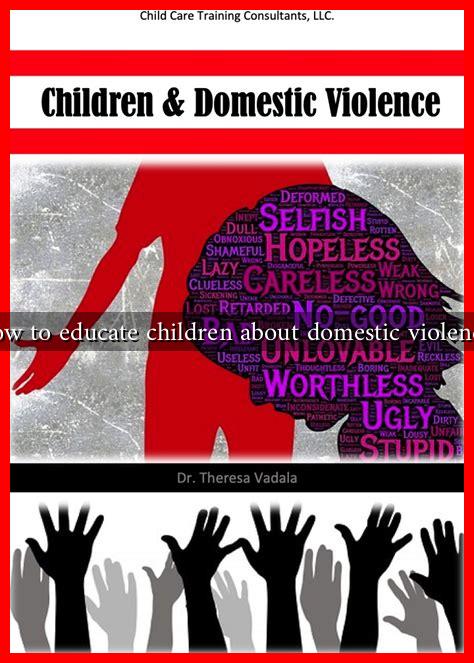-
Table of Contents
- How to Educate Children About Domestic Violence
- Understanding Domestic Violence
- Why Education is Important
- Strategies for Educating Children
- 1. Age-Appropriate Discussions
- 2. Role-Playing and Scenarios
- 3. Utilize Educational Resources
- 4. Encourage Open Communication
- 5. Lead by Example
- Case Studies and Statistics
- Conclusion
How to Educate Children About Domestic Violence
Domestic violence is a pervasive issue that affects millions of families worldwide. Educating children about this topic is crucial for fostering awareness, empathy, and resilience. By providing children with the tools to recognize and respond to domestic violence, we can empower them to break the cycle of abuse. This article explores effective strategies for educating children about domestic violence, supported by research, statistics, and real-life examples.
Understanding Domestic Violence
Before we can educate children about domestic violence, it is essential to define what it is. Domestic violence encompasses a range of abusive behaviors, including physical, emotional, psychological, and financial abuse, typically occurring within intimate relationships. According to the World Health Organization, approximately 1 in 3 women and 1 in 4 men experience physical violence from an intimate partner in their lifetime.
Why Education is Important
Educating children about domestic violence serves several purposes:
- Awareness: Children learn to recognize the signs of abuse, both in themselves and others.
- Prevention: Knowledge can help prevent future abusive relationships.
- Empathy: Understanding the impact of domestic violence fosters compassion for victims.
- Support: Children can learn how to support peers who may be experiencing abuse.
Strategies for Educating Children
Here are some effective strategies for educating children about domestic violence:
1. Age-Appropriate Discussions
Tailor your conversations based on the child’s age and maturity level. For younger children, use simple language and relatable scenarios. For example:
- Use storybooks that address themes of safety and respect in relationships.
- Encourage open discussions about feelings and emotions.
For older children and teenagers, engage in more complex discussions about healthy relationships, consent, and the dynamics of power and control in abusive situations.
2. Role-Playing and Scenarios
Role-playing can be an effective way to help children understand how to respond to domestic violence. Create scenarios where they can practice what to say or do if they witness or experience abuse. This method not only builds confidence but also reinforces the importance of seeking help.
3. Utilize Educational Resources
There are numerous resources available to aid in educating children about domestic violence:
- National Domestic Violence Hotline: Offers resources and information for children and families.
- Love Is Respect: Focuses on educating teens about healthy relationships.
- Local community programs: Many organizations offer workshops and materials tailored for children and families.
4. Encourage Open Communication
Foster an environment where children feel safe discussing their feelings and experiences. Encourage them to ask questions and express their concerns. This open dialogue can help children feel supported and understood.
5. Lead by Example
Children learn by observing the adults in their lives. Model healthy relationship behaviors, such as respect, communication, and conflict resolution. Demonstrating these values can significantly influence how children perceive relationships and violence.
Case Studies and Statistics
Research shows that children who witness domestic violence are at a higher risk of experiencing emotional and behavioral issues. A study published in the journal Child Abuse & Neglect found that children exposed to domestic violence are more likely to exhibit aggression, anxiety, and depression.
Moreover, the National Coalition Against Domestic Violence reports that children are present in 50% of domestic violence incidents. This statistic underscores the importance of educating children about the realities of domestic violence and equipping them with the knowledge to navigate these situations.
Conclusion
Educating children about domestic violence is a vital step in breaking the cycle of abuse. By fostering awareness, empathy, and open communication, we can empower the next generation to recognize and respond to domestic violence effectively. Through age-appropriate discussions, role-playing, and utilizing available resources, we can equip children with the tools they need to create a safer, more respectful world. Remember, the conversation about domestic violence should be ongoing, ensuring that children feel supported and informed as they grow.




